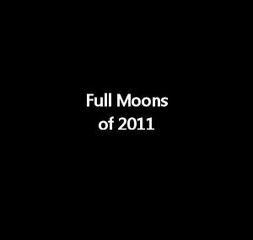There have been some ridiculous news stories over the so-called ‘Supermoon’ of 19th March 2011. Especially the irresponsible one by the Daily Mail suggesting the Tōhoku earthquake of 11th March was caused by it. The only noticeable difference here on Earth will be larger than average spring tides.
This is the text of a post I made in uk.games.video.misc which sums up the facts…
You wouldn’t really notice the difference between a perigee* and an apogee* Full Moon unless they were side by side in the sky.
The Moon is always its ‘usual’ size. Sometimes a little bigger, sometimes a little smaller. Occasionally perigee coincides closely with Full Moon which is what happened on Saturday.
The difference between the extremes is 14% but usually the Full Moon occurs somewhere between apogee and perigee so each Full Moon is only a small percentage different from the next.
In fact this month’s Full Moon was just 1.08% bigger than February’s. April’s Full Moon will be just 0.10% smaller. Impossible to spot the difference. The news articles fail to mention this though!
The only thing unusual about this month’s Full Moon was how close it was to perigee, this made it the largest Full Moon since 1993, but not really anything so extraordinary. The Moon goes through perigee once a month so it always reaches its maximum apparent size at some point in the month, it just might not be full.
The Moon always appears larger when it’s close to the horizon due to an optical illusion. The Moon Illusion. The eye is fooled into thinking it’s further away and you have familiar objects close by to compare size with (e.g. houses, trees).
* the Moon’s orbit isn’t circular, it’s an ellipse. Once a month it passes through perigee (closest to Earth) and apogee (furthest from Earth).
Here is an animation showing the exact point of Full Moon for all of 2011. Notice how the Full Moons of January to April are almost exactly the same size. They then slowly decrease in size over several months. There’s no way anyone will spot the difference from month to month. It also neatly shows the libration effects, where the Moon shows a slightly different face to us as it orbits the Earth. Simulated images are from Virtual Moon Atlas.
The apparent size of April’s Full Moon is only a tiny fraction smaller than March’s. To all intents and purposes another ‘Supermoon’. Will we see stupid headlines about that one? I doubt it.
